NANOMIZER Inc.
| Nanomizer Technology |
Nanomizer Technology
Nanomizer is a media-less, high-pressure and wet-type pulverization machine.
Generally, in order to produce micro-particles, a media such as beads is used to break down the material into particles through mechanical forces generated by high-speed mixing and shearing forces. However, since our Nanomizer does not employ any media, there is no contamination (due to the introduction of foreign bodies or pollutants) resulting from the wear and tear of the media unlike conventional methods. This is a special Nanomizer characteristic that differs from most media-type mills.
Although many similar technologies exist presently, our technology is the leading technology due to the superiority that we enjoy in terms of patent protection, processing technology and know-how that we have accumulated from our pioneering development.
■ Comparison to Conventional Technologies
There are 2 main methods of producing nano-sized particles. One of these is the bottom-up method. This method creates materials with new properties by precisely aligning atoms or molecules (0.1 – 10 nm) one at a time and is mainly employed in the chemical field. In contrast, the other method is known as the top-down method. The top-down method employs structural changes at the atomic level of the materials to re-constitute the particles on a micro-level and is used in the mechanical and electronic industries. Our Nanomizer Technology employs the top-down method to enable super-micronization of various types of materials on a physical level.
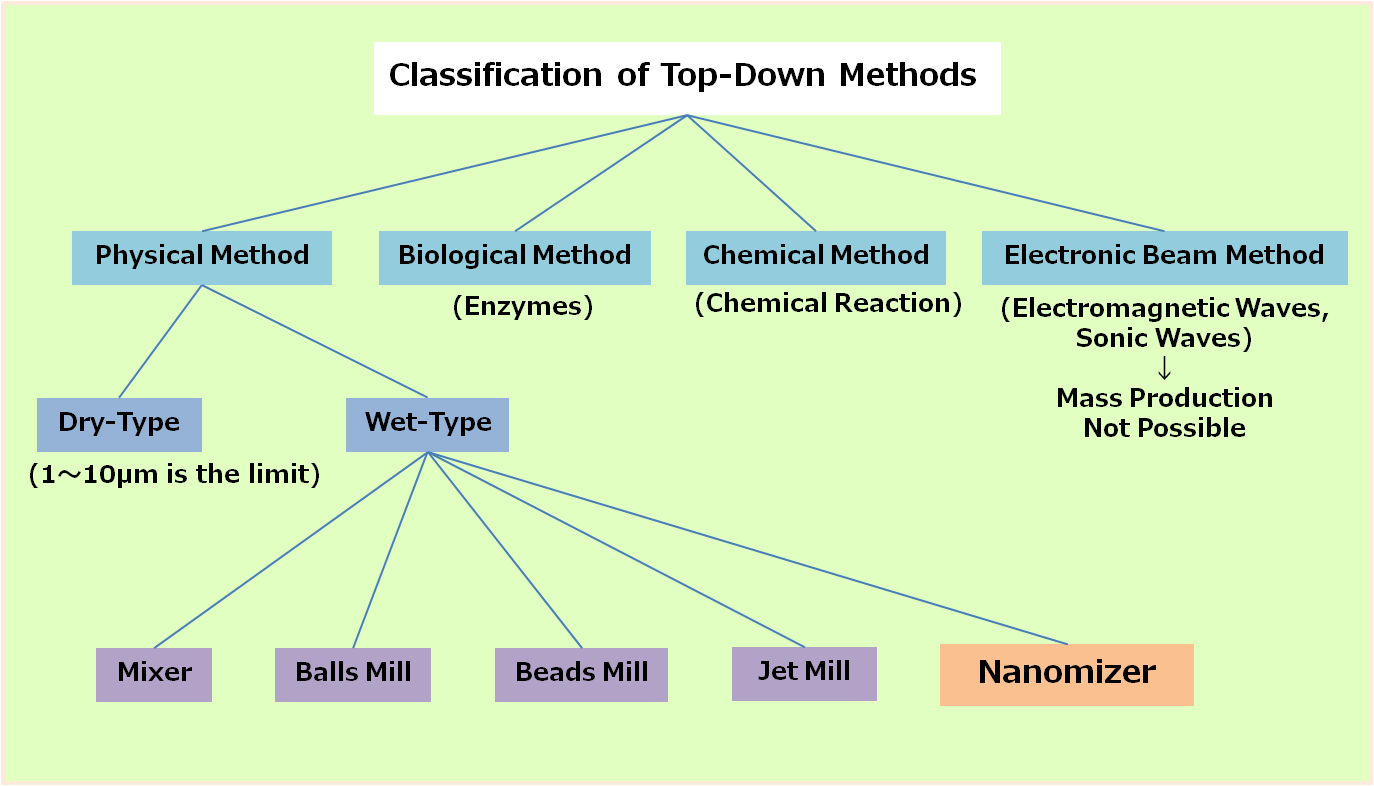
Nanomizer is classified as a wet-type of pulverization technology among the physical methods.
Mixer |
Balls Mill・Beads Mill | Jet Mill | Homogenizer |
 |
 |
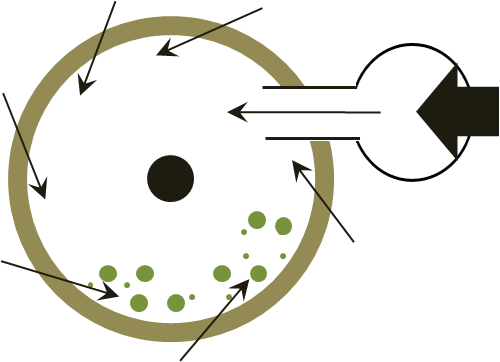 |
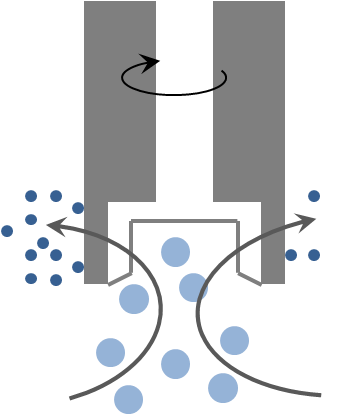 |
The above-mentioned technologies employ either one or a combination of the 4 types of forces, namely compression, shearing, impact and abrasion, to exert an external force to break down and pulverize the material. In addition to these forces, Nanomizer leverages upon the cavitation effect to enable pulverization on a nano-level that has hitherto not been possible with conventional wet-type micronization technologies.
「Compression」 「Shearing」 「Impact」 「Abrasion」
+
Cavitation Effect
![]()
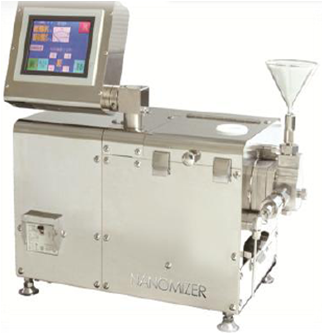 |
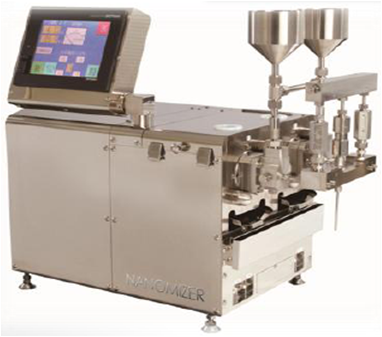 |
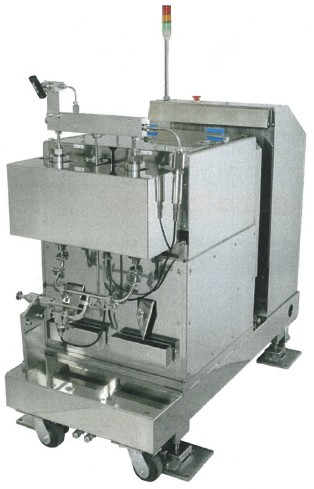 |
Cavitation Effect:
A phenomenon whereby pockets of vaporization occur in low-pressure sections in a high-speed flow for extremely short periods of time and then collapse and vanish within an extremely short period of time as well.

In days gone by, cavitation effect was studied and attracted attention as ‘negative’ energy, which, for example, extremely deteriorated the propeller of the vessels. By change in thinking, our company had tried to apply the energy to pulverization, and over 20 years, we had been developing pulverizing methodology focusing on cavitation effect.
Our core technology lies in the Nanomizer Generator which employs a unique structure to generate cavitation effectively and which is the result of long years of research and development in material processing technologies to withstand this cavitation effect.
(Details of the Generator)
■ Structure of Nanomizer
The principle of Nanomizer is to generate high-speed flow by passing the sample material through a special nozzle (generator) using a high-pressure pump. Based on the cavitation, impact and high-speed shearing forces generated during this time, emulsification, dispersion and crushing of the material is then performed. (Details of the principle of Nanomizer)
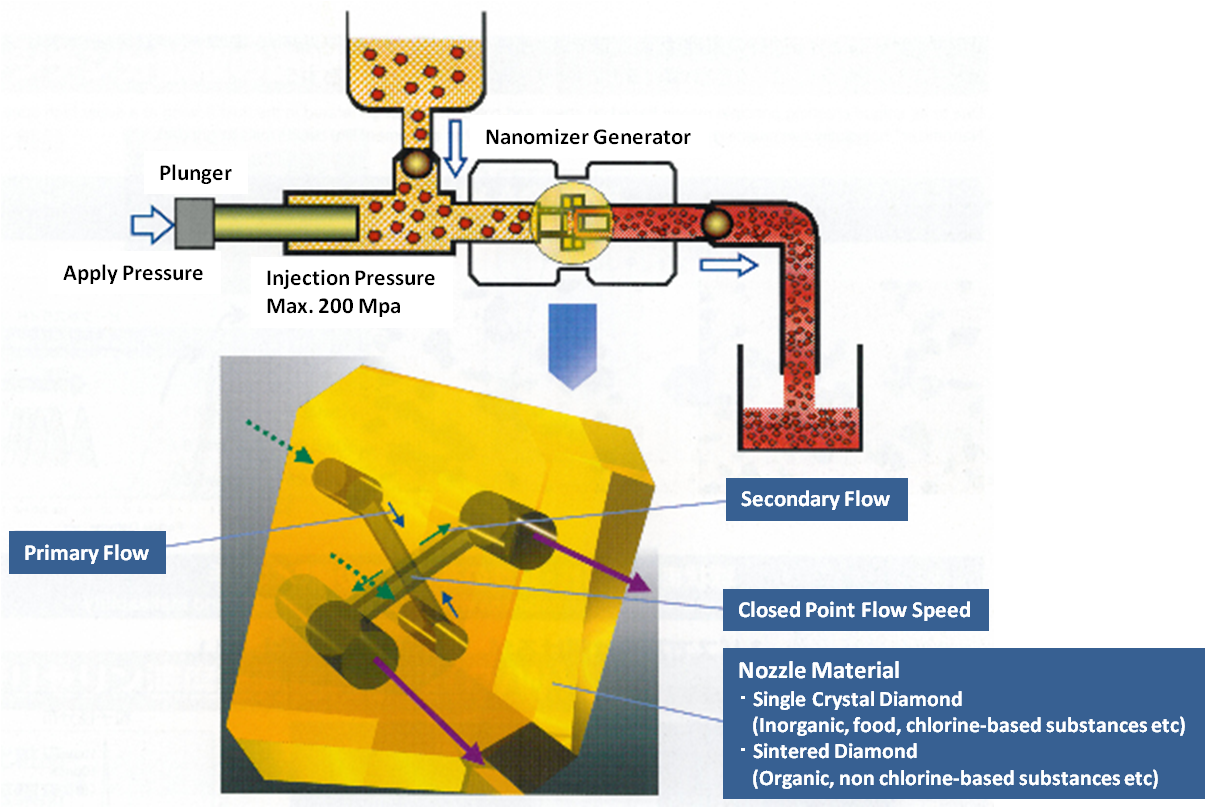
■ Characteristics of Nanomizer
There are 9 characteristics of Nanomizer which are given below.
| ◆ No contamination (little contamination by foreign bodies and pollutants during the pulverization process) ◆ Emulsification, dispersion and crushing can be performed simultaneously using 1 single machine ◆ Processing is possible for even small samples(6mL) ◆ Uniform particle size (sharp density distribution), easy for particle-size design ◆ Wide range of processing pressure from low to high for use in various applications ◆ High energy efficiency, rapid pulverization ◆ Low maintenance and running costs as no media is required ◆ Can be installed on-line for continuous processing ◆ Compact design |
< Notes >
・ The temperature will rise in proportion with the processing pressure
(approximately 0.22 ℃/MPa water equivalent value)